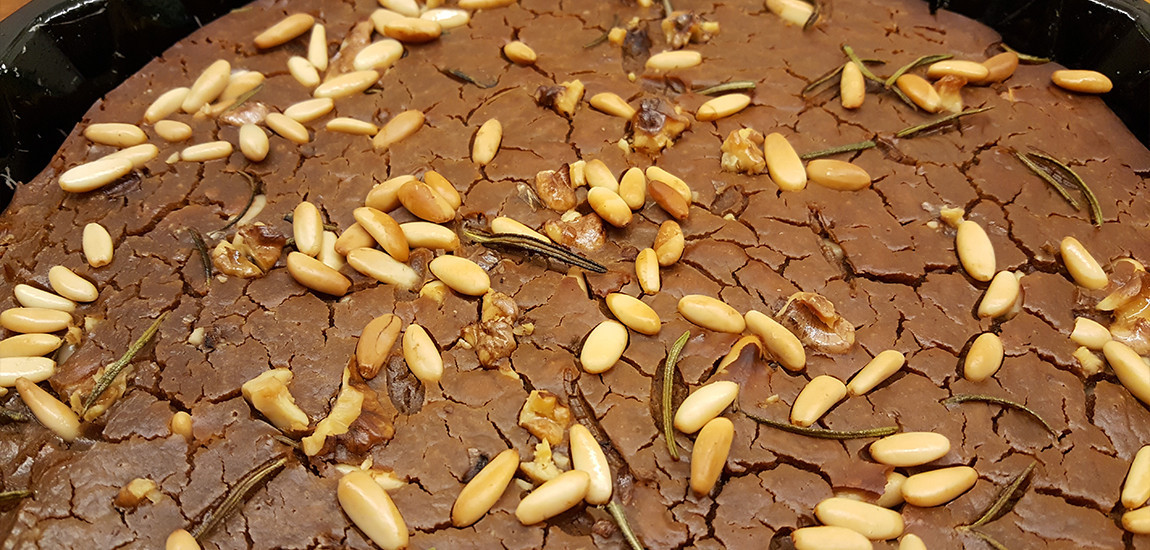
Autumn Recipes: Castagnaccio
Autumn is a bittersweet season. Not everyone appreciates the cooler air and the fiery colors of the changing leaves, because that means the end of hot summer days and the arrival of gray skies and rain.
From a culinary point of view though,
autumn agrees almost with everyone: pumpkins, chestnuts, hazelnuts and other
oily fruits, apples, berries, mushrooms, pomegranates are all a lovely addition
to our tables and they can be used in delicious recipes that will cheer us up
during these melancholic months.
Among all the other autumnal foods, chestnuts in particular are an ingredient
dear to Tuscan tradition. They fed entire generations and the flour made from
these oily fruits was essential for the sustenance of the poorer population
during the winter. A food for the poor, which has been highly re-evaluated in
recent times. After all, the traditional dishes of Tuscan cuisine all come from
peasant recipes, simple and nutritious foods, rich in flavor.
The most common way to consume chestnuts is by roasting them in a particular
pan with holes to make the “caldarroste” also called “bruciate” ( which can be
translated as “burnt”), or by boiling them in water with wild fennel to make
the so-called ”ballotte”.
Back in the day the little kids had fun making “anelli” or “ditalini” (rings or
thimbles). They filled thimbles used for sewing with chestnut flour and then
put them in the fireplace; after a few minutes this delicacy was ready to be
eaten right out of its tiny mold.
Today, we want to share with you a recipe very popular in Florence and its
surrounding areas, a typically autumnal Tuscan dessert found also in Liguria,
Piedmont, and Emilia-Romagna: the Castagnaccio.
Castagnaccio is a gluten free flat cake (about 2
cm high) made with chestnut flour and flavored with pine nuts, walnuts, raisins
and rosemary. A long time ago it was made only with water, chestnut flour and
oil, but the recipe changed over time and some of the variations now include
rosemary or orange rind. Today this simple comfort food has become one of
Tuscany’s favorite desserts. Usually served warm, Castagnaccio tastes just as
good when it cools down – if you manage not to finish it before!
This dessert has ancient origins, in the "Commentary of the most notable
and monstrous things of Italy and other places," by Ortensio Landi of the
1553 it is reported that the inventor of the Castagnaccio was a man called
Pilade da Lucca, so the recipe invented around the XVI century in Tuscany was
then exported to the northern Italy in the XIX century.
According to a curious legend, rosemary leaves used in this recipe had the
power to create love, so if a girl had offered a piece of Castagnaccio to the
young man she was in love with, he would’ve soon asked for her hand in
marriage. Well, it's worth a try!
Castagnaccio recipe
Ingredients
300 gr of chestnut flour
3 tablespoons of sugar
Grated scallions of 1 orange
50 gr of raisins
30 gr of pine nuts
50 gr of walnut kernels
Rosemary
Olive oil
A pinch of salt
Preparation:
Sift the chestnut flour into a bowl and add sugar, salt, grated orange peel
(without the white) and a half liter of water.
Mix well to get a smooth liquid batter (you can also use a mixer), then add 2
tablespoons of oil and let the batter rest for about an hour.
Oil a square baking tray of about 25 cm and pour the batter, it must not be
more than 2 cm high. Now sprinkle the surface with rosemary leaves, pine nuts,
raisins and broken nuts and pour over it 4 tablespoons of oil.
Bake at 200 C° (hot oven) for about 45 minutes.
Enjoy!
This dish represents Autumn at its best, a healthy dessert that traditionally required no sugar at all because it was very expensive. It’s not very sweet, yes, but if you‘ve never tried it yet you will be surprised by how good it tastes nonetheless! Accompanied by a liquor wine like Vin Santo will make the perfect ending to your meal!



